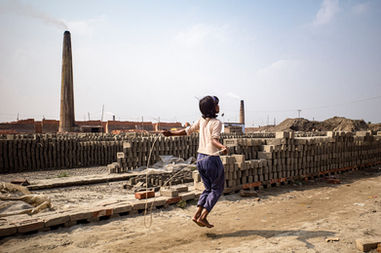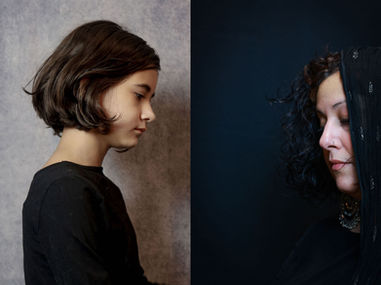
PICTORIAL STORY
September 27, 2024
BEHIND THE PLANTS
The Americans of Cancer Alley
Photography and story by Wayan Barre
Introduction by Karen Ghostlaw Pomarico
In a world where environmental crises, political instability, and economic fluctuations shape the landscape of our lives, the social narratives that define our communities are constantly shifting. These factors often dictate the values, relationships, and systems that either nurture or dismantle the fabric of society. In times of change, the question arises: Do we, as individuals and communities, rise to care for and support one another, fostering resilience and solidarity? Or do we, overwhelmed by our own challenges, turn away from our neighbors, leaving them to navigate an uncertain future alone?
Wayan Barre is a French photographer, born in 1989, based in New Orleans, Louisiana. He is a member of the Raw Society, which dedicates its platform to creating a diverse photographic community with a strong focus on street, travel and documentary photography. Wayan is deeply moved by societal changes and the impact they create. His photography serves as a powerful voice through which the struggles of marginalized communities are brought into focus. His passion for exposing the truth drives him to capture the real, often overlooked, stories of people who face social and systemic challenges. By documenting the lived experiences of these individuals, Wayan seeks to understand their journeys, their resilience, and the structural barriers they confront. His visual narratives don't just highlight the hardships — they also reflect the human dignity and strength that persist despite adversity, calling for action to create more equitable and supportive environments.
One wonders what drove Wayan to create such meaningful work. What opened his mind and heart to see and embrace the importance of visual storytelling that can help create awareness and ultimately build a network and platform for change?
“Ten years ago, I discovered the fascinating world of street photography. My vision was shaped by artists such as Saul Leiter, Henri Cartier Bresson, Fred Herzog, and Alex Webb. I started developing skills & techniques in the street.
I then felt a need to go further and tell stories with my images, moving from single images to compelling narratives. My journey as a documentary photographer was influenced by the works of Josef Koudelka (Gypsies), Tish Murtha (Youth Unemployment), Matt Black (American Geography) and Chris Killip (Seacoal). I began a quest to understand what subject matters resonate most with me. I am continuously drawn to borders and edges of society, places where cultures come together, sometimes easily, sometimes roughly.”
Wayan’s early work was pivotal in shaping his photographic career. He began by collaborating with Forum Réfugiés, a French non-profit, capturing the stories and portraits of refugees and asylum seekers, which ignited his curiosity for documenting marginalized communities. His project “The Sardine Hunters” saw him spending time with sardine fishermen in Western France, offering him a rare chance to engage with diverse lifestyles and viewpoints.
After relocating to the U.S. in 2022, Wayan continued his pursuit of meaningful projects, embedding himself within various communities. His first major U.S. project, “Pointe-au-Chien is not dead,” focused on the resilience of a Native American tribe in South Louisiana. Wayan invested several months documenting the complexities of their challenges.
He also journeyed along the U.S - Mexico border to create “Title 8”, a series highlighting the experiences of asylum seekers in shelters. Wayan’s long-term project “Behind the Plants: The Americans of Cancer Alley” delves into the lives of marginalized communities living near a stretch of chemical plants along the Mississippi River. Most recently, in 2024, Wayan spent time in Kosovo, documenting the lives of Serbs living in isolated enclaves, where ongoing ethnic tensions and economic hardship persist.
Wayan’s body of work reflects his commitment to telling the stories of communities often overlooked, shining a light on their struggles and resilience. Wayan has found what drives him to create meaningful work, it is a passion that will only grow, it has become his seed for change.
“I will pursue this career, no matter the cost, as this gives me a unique understanding of the world surrounding me. This is also my way to raise awareness on topics worthy of attention: I feel like I can play a part.”
Today, we focus on one project that has driven Wayan to devote his time and creative energies through visual storytelling: “Behind the Plants: The Americans of Cancer Alley”. Wayan’s project illuminates the communities suffering and struggling with the realities of what plagues their society, exposing the truths we often do not understand, or fear of simply confronting the truth.
-min.jpg)
In the heartland of Louisiana, between Baton Rouge and New Orleans, a 150-mile corridor along the Mississippi River tells a tale of environmental degradation, social injustice, and economic struggle.
This region, home to over 150 behemoth chemical facilities and oil refineries, is also home to a multitude of communities, predominantly low-income and marginalized. Nearly 50% of the residents are African Americans, their roots intertwined with the land for centuries, dating back to the days of slavery when they were forced to cut and process sugar cane on vast plantations that dominated the river parishes.
The Environmental Protection Agency (EPA) reports a staggering 95% higher risk of cancer due to air pollution for residents in this area compared to the rest of the United States. The consequences extend beyond cancer, with prevalent cardiovascular, respiratory, reproductive, and developmental diseases haunting the lives of the people here. This tragedy has earned the corridor the morbid moniker, “Cancer Alley,” a term underscored by UN human rights experts in 2021 as a stark example of “environmental racism.”
Despite numerous complaints and irrefutable research establishing the causal link between industrial activities and health issues, permits for these facilities persist, and major incidents continue to occur. Louisiana, the third-poorest state in the U.S., is witnessing a concerning regression in air quality while the rest of the nation progresses. This phenomenon gives rise to a perplexing paradox, aptly termed the ‘Red State Paradox’ by sociologist Arlie Russell Hochschild. Despite being a leading state in generating substantial revenues from oil, natural gas, and chemical production, Louisiana finds itself among the worst in socio-economic indicators, highlighting a disconcerting disparity.
This documentary goes beyond the statistics to unveil the personal stories of individuals and families living in the shadow of industrial giants. I explore the stark contrast between the industrial landscape and the daily lives of those who call this corridor home.
Over a half-century, this riverside transformed from a collection of old plantations, tin-roofed shacks and verdant cornfields into an industrial juggernaut. Though the air quality here has improved significantly since the 1980s, as it has in the rest of the nation, the recent history is less encouraging. Not only is toxic air pollution in Louisiana’s industrial belt rising in absolute terms, but the estimated air quality also relative to its peers is getting worse, an analysis by ProPublica found. In parts of Cancer Alley, ProPublica estimated lifetime cancer risk is up to 47 times what the EPA deems acceptable.
And the burden is not being shared evenly. Many of the new plants planned in Louisiana’s petrochemical heart are being built in or near communities that EPA models estimate already have some of the most dangerous air in America. The problems are especially acute in predominantly black and poor communities, like St John the Baptist, St James and Ascension Parishes.
On the west bank, sugarcane stalks shoot out of sprawling green fields as far as the eye can see. Small family homes and grand plantation houses that have seen centuries’ worth of births, deaths and memories are sprinkled throughout the never-ending stretches. The cultural landscape is largely intact.
The east bank has been taken over by a tangle of metal, concrete and smoke. Layers of rust-colored dust coat everything, including roads, buildings and a once-green welcome sign near Atlantic Alumina Gramercy Operations. Despite the Environmental Protection Agency issuing a warning about the plant's dangers in 2016, it continues to operate just 450 feet from the Fifth Ward Elementary School. St. John the Baptist Parish, where the plant is located, held the highest cancer risk in the country for a significant part of the past decade, with the risk being approximately 50 times greater than the national average in 2014. Even today, the cancer risk in the area remains nearly seven times higher than the national average.
Wilma Subra, an activist and scientist, is highly involved in the area. She raises awareness on the risks to the local residents. She is also trying to get blood samples from the cows next to Denka Performance Elastomer to prove the risk on humans.

Wayan Barre is a photographer who has been moved by these devastating social changes and has created his visual narrative to reflect and address many of these issues that marginalized communities struggle with. His passion to expose the truth has driven his visual stories to focus on the people in the communities to better understand exactly who they are, how they got there, and what obstacles they face that need to be overcome to create an environment to have a better life.
As we face unprecedented challenges — ranging from climate change and global pandemics to political polarization and economic disparity — the choices we make in how we relate to others become critical. This dilemma reflects the tension between communal responsibility and individual survival, raising important questions about what kind of society we wish to create. The future, marked by the complexities of change, demands a rethinking of how we define community and what it means to truly care for one another. Will we choose to build bridges, fostering inclusive systems of support, or will we allow the forces of division and neglect to erode the foundations of our shared humanity?
Wayan is particularly sensitive to social and environmental issues and the impact on the communities that survive in these areas. He has worked on various projects, documenting communities, often marginalized and left over, overlooked and most often forgotten.
We thank Wayan for opening our eyes to the reality behind the plants, exposing the communities that are suffering the effects of industrial pollution, while big business continues to profit while overlooking their supporting joining communities. Take the time to enlighten yourself on other social issues that plague our communities, and follow the links to see more projects and to learn more about Wayan’s compelling work. You may find yourself wanting to care more, and actively participate in helping to care for our neighbors.

The views, thoughts, and opinions expressed in the text belong solely to the author/s, and are not necessarily shared by The Pictorial List and the team.























































